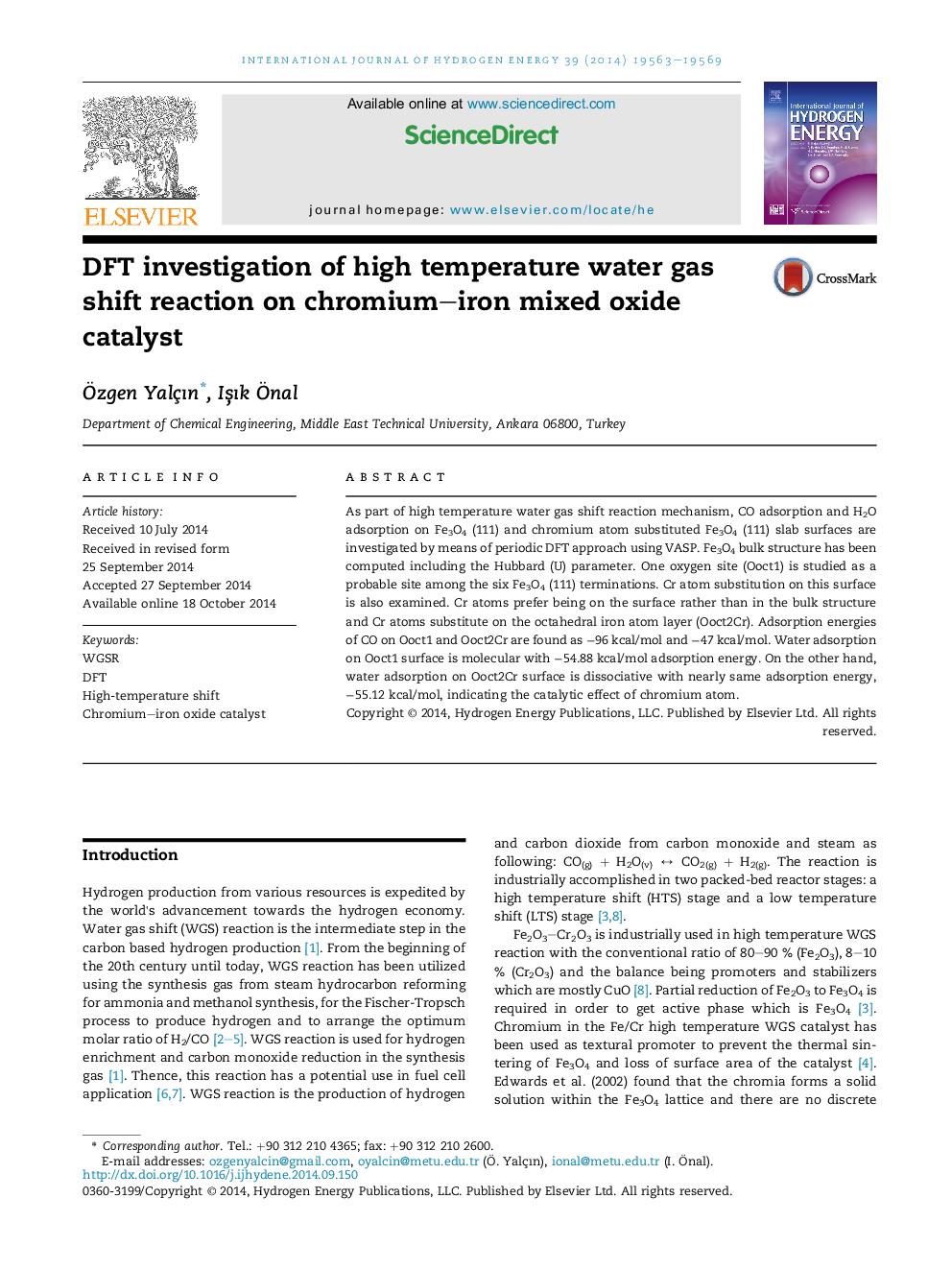| Article ID | Journal | Published Year | Pages | File Type |
|---|---|---|---|---|
| 1280707 | International Journal of Hydrogen Energy | 2014 | 7 Pages |
•Cr atoms prefer being on the surface than in the bulk structure.•Adsorption energy of CO on Ooct1 is found as −96 kcal/mol.•Adsorption energy of CO on Ooct2Cr is found as −47 kcal/mol.•Water molecularly adsorbs on Ooct1 with −54.88 kcal/mol adsorption energy.•Water adsorption on Ooct2Cr surface is dissociative with −55.12 kcal/mol.
As part of high temperature water gas shift reaction mechanism, CO adsorption and H2O adsorption on Fe3O4 (111) and chromium atom substituted Fe3O4 (111) slab surfaces are investigated by means of periodic DFT approach using VASP. Fe3O4 bulk structure has been computed including the Hubbard (U) parameter. One oxygen site (Ooct1) is studied as a probable site among the six Fe3O4 (111) terminations. Cr atom substitution on this surface is also examined. Cr atoms prefer being on the surface rather than in the bulk structure and Cr atoms substitute on the octahedral iron atom layer (Ooct2Cr). Adsorption energies of CO on Ooct1 and Ooct2Cr are found as −96 kcal/mol and −47 kcal/mol. Water adsorption on Ooct1 surface is molecular with −54.88 kcal/mol adsorption energy. On the other hand, water adsorption on Ooct2Cr surface is dissociative with nearly same adsorption energy, −55.12 kcal/mol, indicating the catalytic effect of chromium atom.
Graphical abstractFigure optionsDownload full-size imageDownload as PowerPoint slide
